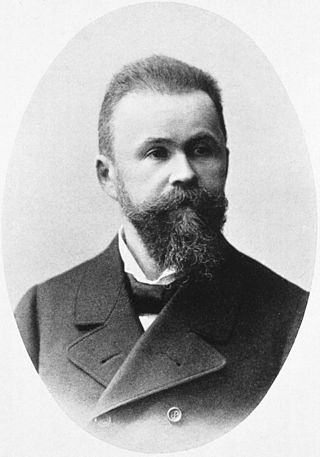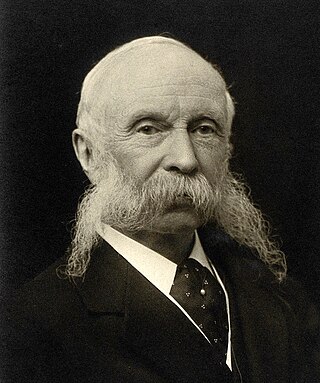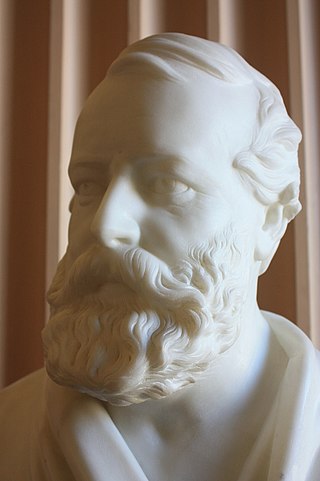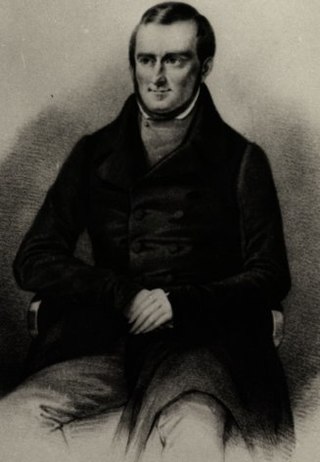Related Research Articles

Dementia praecox is a disused psychiatric diagnosis that originally designated a chronic, deteriorating psychotic disorder characterized by rapid cognitive disintegration, usually beginning in the late teens or early adulthood. Over the years, the term dementia praecox was gradually replaced by the term schizophrenia, which initially had a meaning that included what is today considered the autism spectrum.

Emil Wilhelm Georg Magnus Kraepelin was a German psychiatrist.

Insanity, madness, lunacy, and craziness are behaviors performed by certain abnormal mental or behavioral patterns. Insanity can manifest as violations of societal norms, including a person or persons becoming a danger to themselves or to other people. Conceptually, mental insanity also is associated with the biological phenomenon of contagion as in the case of copycat suicides. In contemporary usage, the term insanity is an informal, un-scientific term denoting "mental instability"; thus, the term insanity defense is the legal definition of mental instability. In medicine, the general term psychosis is used to include the presence of delusions and/or hallucinations in a patient; and psychiatric illness is "psychopathology", not mental insanity.

Philippe Pinel was a French physician, precursor of psychiatry and incidentally a zoologist. He was instrumental in the development of a more humane psychological approach to the custody and care of psychiatric patients, referred to today as moral therapy. He worked for the abolition of the shackling of mental patients by chains and, more generally, for the humanisation of their treatment. He also made notable contributions to the classification of mental disorders and has been described by some as "the father of modern psychiatry".

Cesare Lombroso was an Italian criminologist, phrenologist, physician, and founder of the Italian school of criminology. Lombroso rejected the established classical school, which held that crime was a characteristic trait of human nature. Instead, using concepts drawn from physiognomy, degeneration theory, psychiatry, and Social Darwinism, Lombroso's theory of anthropological criminology essentially stated that criminality was inherited, and that someone "born criminal" could be identified by physical (congenital) defects, which confirmed a criminal as savage or atavistic.

Abnormal psychology is the branch of psychology that studies unusual patterns of behavior, emotion, and thought, which could possibly be understood as a mental disorder. Although many behaviors could be considered as abnormal, this branch of psychology typically deals with behavior in a clinical context. There is a long history of attempts to understand and control behavior deemed to be aberrant or deviant, and there is often cultural variation in the approach taken. The field of abnormal psychology identifies multiple causes for different conditions, employing diverse theories from the general field of psychology and elsewhere, and much still hinges on what exactly is meant by "abnormal". There has traditionally been a divide between psychological and biological explanations, reflecting a philosophical dualism in regard to the mind-body problem. There have also been different approaches in trying to classify mental disorders. Abnormal includes three different categories; they are subnormal, supernormal and paranormal.

In 19th-century psychiatry, monomania was a form of partial insanity conceived as single psychological obsession in an otherwise sound mind.

CarlWernicke was a German physician, anatomist, psychiatrist and neuropathologist. He is known for his influential research into the pathological effects of specific forms of encephalopathy and also the study of receptive aphasia, both of which are commonly associated with Wernicke's name and referred to as Wernicke encephalopathy and Wernicke's aphasia, respectively. His research, along with that of Paul Broca, led to groundbreaking realizations of the localization of brain function, specifically in speech. As such, Wernicke's area has been named after the scientist.

Dipsomania is a historical term describing a medical condition involving an uncontrollable craving for alcohol or drugs. In the 19th century, the term dipsomania was used to refer to a variety of alcohol-related problems, most of which are known today as alcohol use disorder. Dipsomania is occasionally still used to describe a particular condition of periodic, compulsive bouts of alcohol intake. The idea of dipsomania is important for its historical role in promoting a disease theory of chronic drunkenness. The word comes from Greek dipso and mania.

Psychology is defined as "the scientific study of behavior and mental processes". Philosophical interest in the human mind and behavior dates back to the ancient civilizations of Egypt, Persia, Greece, China, and India.
Medical model is the term coined by psychiatrist R. D. Laing in his The Politics of the Family and Other Essays (1971), for the "set of procedures in which all doctors are trained". It includes complaint, history, physical examination, ancillary tests if needed, diagnosis, treatment, and prognosis with and without treatment.
Cyclical variations in moods and energy levels have been recorded at least as far back as several thousand years. The words "melancholia" and "mania" have their etymologies in Ancient Greek. The word melancholia is derived from melas/μελας, meaning "black", and chole/χολη, meaning "bile" or "gall", indicative of the term's origins in pre-Hippocratic humoral theories. A man known as Aretaeus of Cappadocia has the first records of analyzing the symptoms of depression and mania in the 1st century of Greece. There is documentation that explains how bath salts were used to calm those with manic symptoms and also help those who are dealing with depression. Even today, lithium is used as a treatment to bipolar disorder which is significant because lithium could have been an ingredient in the Greek bath salt. Centuries passed and very little was studied or discovered. It wasn't until the mid-19th century that a French psychiatrist by the name of Jean-Pierre Falret wrote an article describing "circular insanity" and this is believed to be the first recorded diagnosis of bipolar disorder. Years later, in the early 1900s, Emil Kraepelin, a German psychiatrist, analyzed the influence of biology on mental disorders, including bipolar disorder. His studies are still used as the basis of classification of mental disorders today.

Sir James Crichton-Browne MD FRS FRSE was a leading Scottish psychiatrist, neurologist and eugenicist. He is known for studies on the relationship of mental illness to brain injury and for the development of public health policies in relation to mental health. Crichton-Browne's father was the asylum reformer Dr William A.F. Browne, a prominent member of the Edinburgh Phrenological Society and, from 1838 until 1857, the superintendent of the Crichton Royal at Dumfries where Crichton-Browne spent much of his childhood.

The classification of mental disorders is also known as psychiatric nosology or psychiatric taxonomy. It represents a key aspect of psychiatry and other mental health professions and is an important issue for people who may be diagnosed. There are currently two widely established systems for classifying mental disorders:

Thomas Laycock FRSE FRCPE was an English physician and neurophysiologist who was a native of Bedale near York. Among medical historians, he is best known for his influence on John Hughlings Jackson and the psychiatrist James Crichton-Browne. Laycock's interests were the nervous system and psychology; he is known as one of the founders of physiological psychology. He was the first to formulate the concept of reflex action within the brain, and is also known for his classification of mental illnesses.

Carl Friedrich Flemming was a German psychiatrist born in Jüterbog. He was the father of cellular biologist Walther Flemming (1843-1905).

Sir John Batty Tuke PRCPE FRSE LLD was one of the most influential psychiatrists in Scotland in the late nineteenth century, and a Unionist Member of Parliament (MP) from 1900 to 1910. Tuke's career in Edinburgh from 1863 to 1910 spanned a period of significant social and political changes in asylum governance and care in Scotland. Tuke's professional success in public and private practice and his powerful role in several prominent medical societies allowed him to influence his colleagues toward a more physiological understanding of mental illness and its treatment.
Unitary psychosis (Einheitspsychose) refers to the 19th-century belief prevalent in German psychiatry until the era of Emil Kraepelin that all forms of psychosis were surface variations of a single underlying disease process. According to this model, there were no distinct disease entities in psychiatry but only varieties of a single universal madness and the boundaries between these variants were fluid. The prevalence of the concept in Germany during the mid-19th century can be understood in terms of a general resistance to Cartesian dualism and faculty psychology as expressed in Naturphilosophie and other Romantic doctrines that emphasised the unity of body, mind and spirit.
The psychical school or psychic school was a school of thought in eighteenth, nineteenth and early twentieth century psychiatry that held insanity to be solely caused by psychological disorder. Early representatives included English surgeon Andrew Harper (?–1790), and German psychiatrists Johann Gottfried Langermann (1768–1832), Johann Heinroth (1773–1843) and Karl Wilhelm Ideler (1795–1860).
Insanity in Ancient and Modern Life, with chapters on its prevention is a medical book written by the English physicist and practical worker in medicinal psychology Daniel Hack Tuke (1827-1895) in 1878. Tuke dedicated much of his time encouraging humanitarian treatment for the mental ill. His knowledge is summarized and clarified in many of his medical books, in which he often takes controversial and novel standpoints. The presented book discusses the causes of mental disorders in relation to the maturation of society and considers factors which can positively contribute to the prevention of psychiatric diseases.
References
- ↑ Bucknoll JC (1856). The asylum journal of mental science. Vol. 2. Exeter: William Pollard. pp. 78–9.
- ↑ Engstrom EJ (2003). Clinical psychiatry in imperial Germany: a history of psychiatric practice. Cornell University Press. pp. 58–9. ISBN 0-8014-4195-1.
- ↑ Anonymous (July 1882). "Review of Die KorperlichenGrundlagen der Guistesstorungen; ein vortrag by Paul Flechsig" (PDF). American Journal of Insanity. 39: 89.